
Category Archive: Pittsburgh Tribune Review
-
Foundations Aid Pittsburgh YWCA’s Green Roof
By Bill Zlatos
PITTSBURGH TRIBUNE-REVIEW
Thursday, June 17, 2010The YWCA is getting a green roof, part of a campaign by charitable foundations to make Downtown more environmentally friendly.
“We’ve seen an increasing number of green roofs in Pittsburgh in the past three years, some of which are Downtown,” said Aurora Sharrard, director of innovation for the Pittsburgh Green Building Alliance.
When its roof is completed, the YWCA will join the Highmark Building, Fifth Avenue Place and the Heinz 57 Center among Downtown buildings with green roofs, she said. The Allegheny County Office Building also is installing one.
Green roofs use plants to soak up rain and reduce runoff, cut heating and air conditioning costs, make the building quieter and improve air quality.
Reducing runoff is especially important in Allegheny County because storm and sewage overflow is released into the rivers during hard rains.
“We want an environmentally responsible green roof,” said Carmelle Nickens Phillips, the YWCA’s vice president of development and communications. “It provides a lot of benefits — a longer material lifespan, energy savings, sound insulation, and it’s really compatible with the neighborhood.”
Phillips cited neighboring Point Park University’s $244 million Academic Village. The university’s plan includes street improvements and tree plantings on Boulevard of the Allies at the end of July and converting the old YMCA building on the boulevard into a Student and Convocation Center. The university completed a dance studio that has a gold certification in Leadership in Energy and Environmental Design, or LEED, from the U.S. Green Building Council.
“We’re very excited about continuing our part of neighborhood enhancements that are green-based and are pleased to know that other neighbors are doing so as well,” said Point Park spokeswoman Mary Ellen Solomon.
The cost of the YWCA roof is $1.1 million. Its building on Wood Street is 42 years old.
The Richard King Mellon Foundation gave the YWCA $125,000 and the Eden Hall Foundation gave $50,000 — raising the total amount from foundations to nearly $400,000. The Mellon Foundation agreed to provide a challenge grant within the next 18 months, and the Pennsylvania Redevelopment Assistance Capital Program will provide $500,000.
Scott Izzo, director of the Mellon Foundation, declined comment. Officials with Eden Hall could not be reached.
-
Study Offers 6 Options for Mellon Arena
By Jeremy Boren
PITTSBURGH TRIBUNE-REVIEW
Thursday, June 17, 2010Demolishing Mellon Arena would make way for a mix of new homes and high-end office space covering nine city blocks in the lower Hill District, according to a study released Wednesday.
The 107-page report provides the first detailed look at six scenarios, which include restoring the arena to its original 1961 design; mothballing it indefinitely; preserving its unique silver dome; and razing it to build 1,191 residential units and 608,000 square feet of offices.
Representatives of the city-county Sports & Exhibition Authority said last week that they favor demolishing the Igloo and allowing the Penguins to build a mixed-use development — a plan referred to as “Option 5” in the study, prepared by consultant Michael Baker Engineering of Moon.
The firm organized seven meetings and a tour of Mellon Arena for public input. The lengthy report is the result and is open to public comment and revision.
The SEA, which owns Mellon Arena, will consider comments on the report before the authority’s board of directors makes a decision on the arena’s fate, said Chris Cieslak, a consultant working with Oxford Development and the SEA.
“What we don’t want is what has happened in Portland, Oregon, where they have talked about it for nine years and the city of Portland has had to pay the holding costs on (Memorial) Coliseum,” Cieslak said. Groups have opposed razing the Pacific Northwest arena.
Penguins President David Morehouse said the team agrees with the report’s findings, which correspond to a market analysis performed by Penguins consultant AECOM.
He wants demolition of Mellon Arena to begin in a year. The team owns the rights to develop the site.
“The last thing we want to do is put an impediment in front of a developer and say: ‘We want you to put this development in but, by the way, you have to put it underneath this dome,'” Morehouse said. “The people proposing that have no developers and no money for that.”
Those trying to save the arena from destruction are surprised by the study’s release. Architect Rob Pfaffman, founder of the Reuse the Igloo group, said he wasn’t aware the full report was available until told by a reporter.
Pfaffman’s vision is to build a boutique hotel inside the arena with retail and open-air park space.
“They have gone on the record, at least with us, that they prefer Option 5,” Pfaffman said. “We don’t think the process was properly followed.”
Pfaffman’s preservation group hired its own consultant to examine alternatives to tearing down the 49-year-old arena — the National Hockey League’s oldest venue. Mellon Arena will be replaced by the $321 million Consol Energy Center when it opens in August across Centre Avenue.
Pfaffman said if the SEA was sincere about finding alternatives to demolishing Mellon Arena, the authority would conduct a more detailed study and perform an engineering analysis of the building.
Neither has occurred.
The study said that in addition to making room for office space and homes, demolishing the arena would allow three north-south streets to be built. The streets would connect Bedford and Centre avenues — roads that planners eliminated when building the arena.
Razing the arena also would provide space for 208,750 square feet of retail development; a 150-room hotel; 2,145 parking spaces; and 57,560 square feet of “public open space located along pedestrian corridors,” the study said.

-
Brookline School’s Garden Nurtures Students’ Senses
By Jodi Weigand
PITTSBURGH TRIBUNE-REVIEW
Wednesday, June 16, 2010
Jimi Hutchin, 14, sings "God Bless America" with help from Pioneer chorus director Mark Kwolek during a tree-planting ceremony for the Brookline school's sensory garden on Tuesday. Sidney Davis | Tribune-Review
Pioneer school in Brookline on Tuesday formally dedicated one of the area’s first sensory gardens located at a public school.
The gardens provide people with intellectual and developmental disabilities a range of sounds, sights, textures and smells. Pioneer serves about 75 children and adults ages 5 to 21 with rare disabilities and special medical needs.
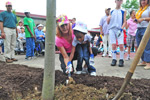
Pioneer school special-education teacher Mary Lou Walczak helps Cache Brown, 8, plant a tree for the school's sensory garden on Tuesday. Sidney Davis | Tribune-Review
“What an important prototype this is going to become for our entire region,” said Judy Wagner, senior director of the community garden and green space program for the Western Pennsylvania Conservancy, which helped design the garden. “This is a very special example of how greenery can really improve the lives of everyone.”
Pioneer’s garden, on about an acre of land in the school’s backyard, has textured plants and brightly colored, fragrant blooms. It features a fountain, hummingbird feeders, swings and benches. Still to be installed are vine canopies over some of the walkways, outdoor musical instruments and raised planters for students to use. A $100,000 grant from the Edith L. Tress Charitable Trust funded the gardens.
“Students will be able to grow fruits and vegetables, and we’ll harvest those for (a course called) activities of daily living, where they learn how to cook and shop and store food,” said Principal Sylbia Kunst. “Our teachers will develop lessons using different parts of the sensory garden.”
Chris Hutchin of Carrick said she’s glad her son Jimi, 14, who has attended the school since 2000, will get to spend more time outdoors.
“A big part of the kids’ growth is being outside,” she said.
When designing the garden, Pioneer officials and the architect sought input from organizations such as the Western Pennsylvania School for Blind Children and Allegheny Valley School, which both have sensory gardens.
“They can encourage imagination or stress release (or) if someone needs to have more stimulation because they’re lethargic,” said Carol Erzen, director of training and staff development at Allegheny Valley School, which provides therapeutic programs to adults and children with disabilities. “It’s a place to truly enjoy nature.”
Kunst said having a secure, handicapped accessible garden at Pioneer will provide more learning opportunities.
“This is another way for our kids to be involved,” she said.
-
Fund Set Up to Pay for Pittsburgh Monument Maintenance
By Pittsburgh Tribune-Review
Tuesday, June 15, 2010
Last updated: 1:33 pmPittsburgh City Council today approved setting up a trust fund to bankroll maintenance to monuments and war memorials in the North Side.
Establishing the account was part of several bills introduced last week by Council President Darlene Harris after people and veterans groups complained that many of the markers had fallen into disrepair.
Harris set aside $40,000 from money left in a 2001 account for projects in her district and money originally dispersed in 1996 for community development for her district.
Council also approved a measure charging the city’s Public Works, Parks and Recreation and City Planning departments to prepare an inventory of the war monuments and memorials throughout the city in order to create a 10-year maintenance plan to be included in the 2011 capital budget.
There are more than a dozen monuments and war memorials in Harris’ district of 13 neighborhoods and more than 60 citywide.
-
Fountains, Graffiti Wall Suggested for Mellon Park Overhaul
By Adam Brandolph
PITTSBURGH TRIBUNE-REVIEW
Tuesday, June 15, 2010Water fountains, more seating, new sidewalks and a graffiti wall were some of the ideas mentioned Monday night as residents met with city officials and community leaders to plan for a major overhaul of Mellon Park in Shadyside.
Despite recently completed work and projects in the planning stage, the meeting at the Third Presbyterian Church in Shadyside brought together interested parties in a single setting for the first time since the original plan was completed in 2002.
“We know this is a park for Shadyside, Squirrel Hill and Point Breeze. … But it’s also a park for Homewood, East Liberty, East Pittsburgh … and people who get off buses to enjoy this park,” said City Councilman Bill Peduto.
The 35-acre park was bequeathed to the city by the Mellon family estate. Its location at the intersection of Penn and Fifth avenues makes the park easily accessible by public transportation.
Recent upgrades include new lighting and a public art installation. Work is nearly complete on a wall garden, and officials spoke last night of new restrooms and a spray park for children.
“Designing a process for a master plan depends on what you want to get out of it,” Susan Radermacher, curator for the Pittsburgh Parks Conservancy, told about 60 people at the meeting. “Always, it should start looking at the history of the place, how it’s being used today and what we’d like to see moving forward.”
Residents voiced concern over noise from the park and limited parking.
“I really hope they can take advantage of all the beauty and the great location of the park,” said Marie Schnitzer of Shadyside. “It’s a wonderful community asset and I think residents not only have plenty of suggestions, but probably the answers.”
-
Scottdale Revitalization Committee Studying Designs for Borough Signs
By Rachel R. Basinger
FOR THE DAILY COURIER
Tuesday, June 15, 2010
Last updated: 7:10 amThe Scottdale Town Center Revitalization Committee is studying the prospect of designing signs for the downtown area of the borough that will help direct visitors as well as provide historic information.
Jim Pallygus, chairman of the board of directors for the STCRC, told council Monday the committee was hoping to put about $3,900 toward the purchase of street signs, historical signs and possibly other types of signs throughout the borough.
“I was hoping we could get permission to begin designing some of the signs, such as the logo, the font, the size, etc., and then when we have something concrete we would bring it back to you for your input or recommendation,” Pallygus said.
Councilman Andy Pinskey presented a motion that requests the STCRC committee work with members of council’s public services committee and then come back to council with recommendations.
In other business Monday, council appointed Michael Mlay to the Parks and Recreation Commission. Pinskey voted against the appointment. Mlay will finish the term of Scott Miller, who recently resigned. The term expires May 1, 2011.
Mlay said he and his wife moved to Scottdale in 2008. He is a high school teacher in Greene County, and his wife is a teacher in the Ligonier Valley School District. He said they moved to the borough because it was a central location to both districts.
“We looked at all the different local communities, and what drew us to Scottdale was the parks,” he said. “There are so many that are so close, and they’re all so beautiful and so nice.”
Because this is now his home, Mlay said he and his wife plan to stay here and want to begin getting involved and setting down roots.
Resident Duane Huffman also had sent the borough a letter of interest about filling the vacancy, but he was not present at the meeting.
Because he was not in attendance to talk about his interest in the position, the majority of council voted to fill the spot with Mlay.
Pinskey said he voted no because Huffman didn’t have the opportunity to talk to council.
Because of the death of Mayor Chuck King’s wife, Nellie King, on Sunday, members of council recessed the meeting after public comment so they could visit the funeral home to give their condolences.
The meeting was recessed at 6:45 p.m.
-
Thousands to Take to Ohio’s Banks Saturday for River Sweep
By Rossilynne Skena
VALLEY NEWS DISPATCH
Monday, June 14, 2010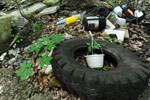
Litter covers the hillside below Garvers Ferry Road in Parks Township, which will be targeted Saturday during the River Sweep for the Ohio River and its tributaries. Volunteers will clean up near Carnahan Run, a tributary of the Kiski River. Jason Bridge | Valley News Dispatch
Pat Walters grew up on the Allegheny River. She remembers a time when she swam the river every day.
As the public has become more aware of the river’s dangers, however, people don’t do that anymore.
Still, Walters is passionate about the river and about keeping it clean. She is secretary of Natrona Comes Together Association and organizer of Natrona’s river sweep.
On Saturday, she’ll be one of thousands of volunteers to participate in River Sweep. Volunteers will descend the banks of the Ohio River and its tributaries, spanning six states to the Ohio River’s end in Illinois, said Betsy Mallison, the state’s River Sweep coordinator. The Ohio River Sweep program began in 1989.
Over the years, Walters has noticed an improvement in the riverfront. Volunteers are keeping it clean, and they’re not finding tires, toilets, bicycles and shopping carts along the riverbank anymore.
Mallison said water quality has improved, fish have come back and more people are using the river.
But even today, she said, trash is left behind by people using the rivers and by contractors.
“While we’ve seem river conditions drastically improve over those 20 years,” Mallison said, “we still need to do some work out on the rivers and their banks.”
This year at the Natrona site, volunteers will paint guardrails, cut grass and pull weeds, Walters said. Volunteers with the Natrona Comes Together Association have already planted about a dozen wooden planters of flowers and shrubbery, she said.
Dennis Hawley, president of the Crooked Creek Watershed Association, said he’s found everything from car fenders to couches in his 10 years taking part in river sweep. His area covers Crooked Creek, a tributary of the Allegheny River, which is, in turn, a tributary of the Ohio River.
John Linkes, director of the Kiskiminetas Watershed and Roaring Run Watershed, said he began volunteering in 1999, after realizing how illegal dumping contaminated local waterways and well water. In his time volunteering, he’s seen tires and refrigerators dumped near local waterways.
But, he said, he has a sense of well-being after having contributed to cleaning up the environment.
“For that one shiny, bright moment, those four hours, we leave that area a little bit cleaner,” Linkes said. “And the sun seems to be shining a little bit more.”
Sweeping the banksVolunteers for the Ohio River Sweep on Saturday should wear old, comfortable clothes and shoes or boots that can get dirty, according to River Sweep’s website. Close-toed shoes are recommended. Trash bags and gloves will be provided.
No pre-registration is required, but volunteers must sign a waiver of liability to participate, and anyone younger than 18 must have parental permission to take part.
Refreshments and a T-shirt will be provided.
Valley River SweepsHere’s a list of River Sweeps in the Alle-Kiski Valley on Saturday. Refreshments and a T-shirt will be provided.
• Natrona section of Harrison: Meet at the pavilion on Veterans Way
9 a.m. to 2 p.m.
• Bethel Township: Crooked Creek site at Rosston Boat Launch, off of
Ross Avenue
8 a.m. to noon
• Parks Township: Garvers Ferry Road
8 a.m. to noon
• Braeburn section of Lower Burrell: Chartiers Run, Braeburn Road
-
Historical Societies Foster Pride and Preservation
By Matthew Santoni
PITTSBURGH TRIBUNE-REVIEW
Thursday, June 10, 2010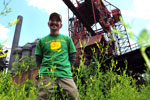
Ronald A. Baraff, director of museums and archives for the Rivers of Steel Heritage Area, which chronicles the history and culture of the industries and mill towns along the rivers, visits the former Carrie Furnace steel mill site in Braddock. Rivers of Steel recently acquired the site from the county to turn into a museum. Sidney Davis | Tribune-Review
The statue of Pittsburgh Pirates legend Honus Wagner might stand outside PNC Park on the North Shore, but fans who desire something more can head six miles down the Parkway West to the Historical Society of Carnegie’s miniature museum to learn about its native son.
In a historic building along West Main Street, a small exhibit on Wagner shares space with yearbooks and photos from area schools, a memorial wall for the town’s military veterans, and a painstakingly crafted scale model of the borough’s buildings along East and West Main Street, all funded without help from the municipality.
“We support ourselves. We figured it was better to be people-funded rather than tax-funded,” said Marcella McGrogan, executive director of the society. “Our town’s streets and parking lots need the help more than we do.”
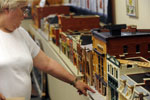
Volunteer Joan Harbin points out a model of the building housing the artifacts and exhibits on display at the Historical Society of Carnegie in the small museum on West Main Street. Keeping up with the maintenance of the building and expansion plans has been a struggle, but officials say local history groups, such as the Carnegie's, help to instill local pride and encourage tourism and redevelopment. James Knox | Tribune-Review
Carnegie is one of many communities in the region with a historical society, which officials say can encourage economic development by drawing tourists, instilling local pride and marketing a community’s historic assets.
“We have a ‘Babushkas and Hardhats’ tour … that looks at the development of the Pittsburgh region, why industry located here, why it isn’t here now and how Pittsburgh has reinvented itself,” said Ron Baraff, director of museums and archives for the Rivers of Steel Heritage Area, which chronicles the history and culture of the industries and mill towns along the rivers.
About 15 acres of the former Carrie Furnace steel mill site in Rankin and Braddock were transferred from the county to Rivers of Steel, and officials hope to turn the former blast furnaces into a museum.
“The idea is to bring people into the region and get them to understand that the past built the present, that that’s the foundation for the future,” he said.
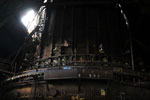
About 15 acres of the former Carrie Furnace steel mill site in Rankin and Braddock were transferred from the county to Rivers of Steel, and officials hope to turn the former blast furnaces into a museum. Sidney L. Davis | Tribune-Review
How and why it helps
The Young Preservationists Society of Pittsburgh released a report last month estimating that preserving and restoring historic properties added at least $475 million to Southwestern Pennsylvania’s economy from 2003 to 2009. Local historical societies can encourage such redevelopment and reinvestment by making people more aware of the history of their communities and homes, said Arthur Ziegler, president of the Pittsburgh History and Landmarks Foundation.
“People tend to believe in the value of that area and are more willing to invest, particularly in historic buildings,” Ziegler said. “It can also develop visitor interest, which can bring income to a town.”
The Sewickley Valley Historical Society is too small to maintain a museum space of its own, but its library allows people to research the history of their families or their homes, said Harton Semple, executive director.
“We’re a small society — only about 400 members — but we have a rich history to draw upon,” Semple said. “We are assailed on all sides by development and general apathy, but we’re beating back that tide.”
The Sewickley Valley society’s “nest egg” was hit hard by the recession, but it has sustained itself with members who made donations above and beyond their yearly membership dues, Semple said. The group published a history of Sewickley last year, and is beginning a push to fund and erect historical markers around the area, he said.
The Historical Society of Mt. Lebanon charges a small fee for its “home history project,” which presents homeowners with a report on the architect who designed their houses, construction plans for them and any other tidbits that members of the historical society can dig up, said Executive Director Margaret Jackson.
Mt. Lebanon’s society is entering its second year of operating a small museum space off Washington Avenue, which hosts rotating exhibits on local subjects such as the nearby Washington School or the Mt. Lebanon Soccer League, Jackson said. More and more residents are donating artifacts and photographs, but that raises the new challenge of how to store and protect them all. Yearly contributions from the municipality’s budget are enough to cover rent on the museum space, she said.
“We’re slowly getting the word out that we’re here, that we’re not just for little old ladies,” Jackson said. “Mt. Lebanon is just celebrating our centennial. … Hopefully, we’ll preserve our community’s past for decades to come.”
The Westmoreland County Historical Society this week moved its library and museum space to a new location on Sand Hill Road, which is more accessible to the many people who use its archives to research their family’s past, said Executive Director Lisa Hays.
“What’s surprising is how far people will travel to study their genealogy. … We had people come from as far away as Australia last week,” Hays said. “Typically, one person will sit and do research while the rest of the family goes out and sees the local sights.”
Hays said local societies help residents understand their communities’ place in the larger events of history, and knowing what roles they played or how they were affected can foster civic pride.
“Everyone thinks nothing ever happened in their backyard, but it did — everything that’s happened on a national level, on a world level, was played out on a local level,” she said. “Once that dawns on people, it creates a real sense of local pride.”
